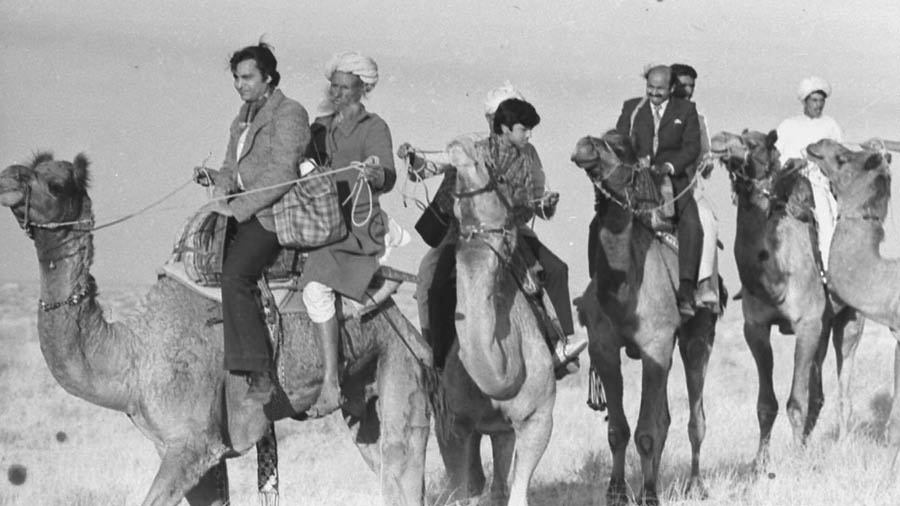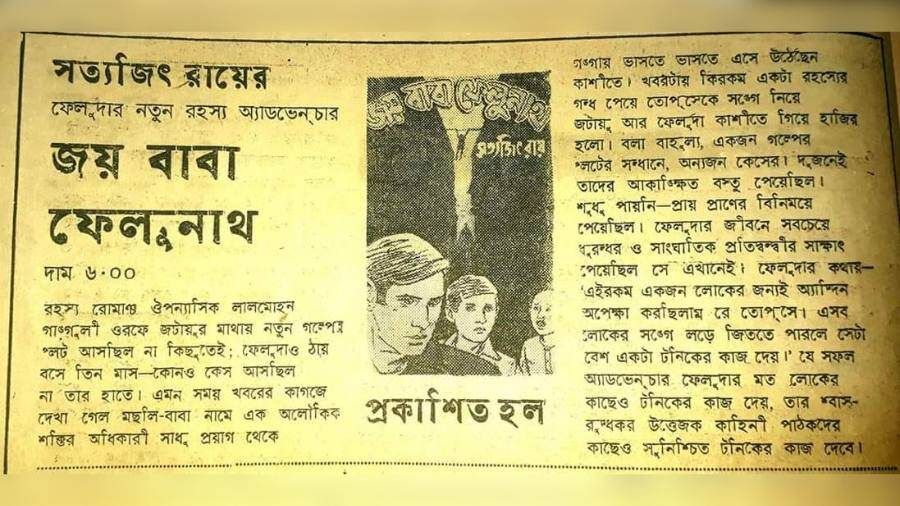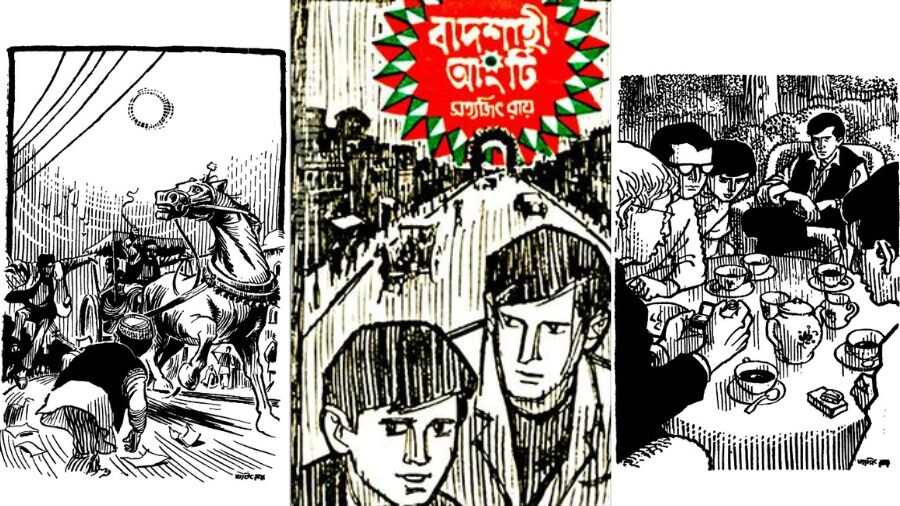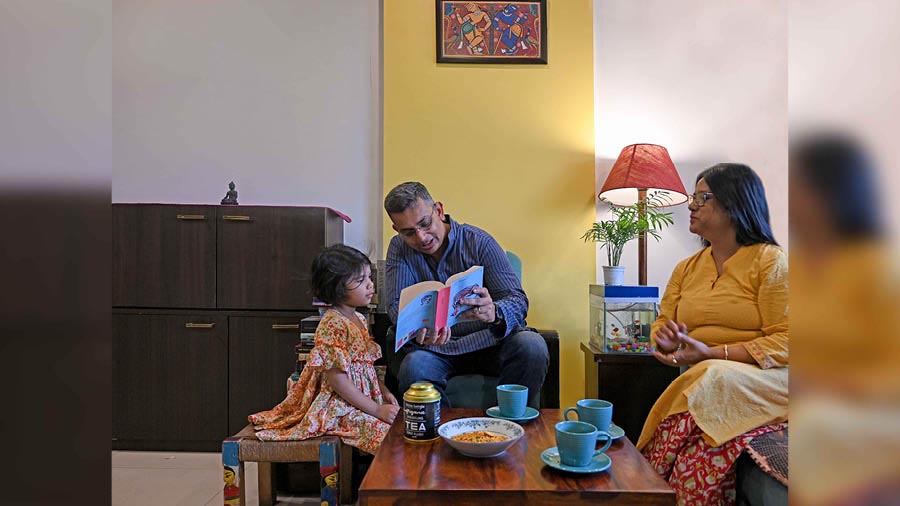It was 1973. I had just turned eight a few days ago. In the lane leading to our home, I was playing with a few friends, when I saw Jaba-di walking towards me with a book. She stayed nearby and her father was my father’s senior in office. My heart leapt at the prospect of an unexpected belated birthday gift. And indeed it was! Jaba-di was carrying for me Badshahi Angti (The Emperor’s Ring), the first Feluda novel. I still remember the date: August 3.
The reason I can recall the date is that inside the book, as was the custom, Jabadi wrote ‘Shubho Janmodin’ (Happy Birthday), my name and then signed her name with the date in Bengali. However, while writing the date, she wrote 8 in English, which is quite similar to 4 in Bengali. Thus the date written was the Bengali equivalent of 3.4.73, instead of 3.8.73.
Though I knew of Feluda, I had not read any of his stories till then. Sonar Kella (The Golden Fortress) had already been published but Satyajit Ray had not adapted the book to the screen yet. Badshahi Angti is what started my special relationship with Feluda. That I was captivated would be an understatement. Even my father, far removed from the world of children’s stories, had to ask “Where is the angti (ring)?” the moment he returned home after having to go to his office leaving the book unfinished.
Such was the lure of Feluda, that a few weeks later, Jaba-di herself borrowed the book she had gifted me, promising to return it soon. She never did. I had lost my Badshahi Angti.

The famous camel riding scene from the screen adaptation of ‘Sonar Kella’ directed by Satyajit Ray
Years passed. My Feluda fandom only grew. I felt a special kinship with him because I was born in 1965, the year he first appeared in print. I had read all the cases Pradosh C. Mitter had solved by then and had even watched Sonar Kella on screen, when one day, while visiting a classmate named Suchitro, I started browsing the bookshelf he shared with his older siblings. My eyes paused at Badshahi Angti.
Reminded of the copy that I had once briefly possessed, I picked up one before me. I lingered on the cover and then, slowly, turned it. On the third page, in Jaba-di’s handwriting was her birthday wish to me, followed by her signature and the Bengali date and year with the English month in between.
I was overjoyed to recover my lost Badshahi Angti. The book had been kept on the shelf by one of Suchitro’s siblings. Their family did not know Jaba-di’s family, so Suchitro had no inkling of the route that my book had taken to reach his home. He had not even seen the birthday wish written inside. Maybe it was just the already widespread network of Feluda fans. After a while, we stopped trying to figure out what might have happened. But I bet Feluda would have cracked the case.
The adventure that started at Matar Stand

L-R: The 1971 issue of ‘Desh’ featuring ‘Sonar Kella’ and a 1995 Feluda- special issue of ‘Sandesh’
Even in the mid-1960s, when Ray first started writing Feluda stories, and the 1970s, the love for the fictional detective transcended the borders of Bengal. I experienced this firsthand in the Northeastern state of Tripura, where I grew up.
Within a few years of Ray creating ABCD (Asia’s Best Crime Detector), Feluda had become one more reason for his fans to look forward to Durga Puja. That was because the new Feluda stories would be published in the Desh pujabarshiki issue. The Puja issues of Sandesh also published Feluda stories regularly.
Books, newspapers and periodicals published from Kolkata have always been popular in the predominantly Bengali-speaking Tripura. In those days, it was not possible to publish newspapers and magazines simultaneously from multiple locations. What was published in Kolkata in the morning would reach Agartala in the afternoon via flights.
Hence, Matar Stand (a deconstruction of Motor Stand), a busy bus terminus in the Tripura capital, had a significant role in my childhood, especially as I counted down to Puja. For it was also the location of the office of G.L. Modak, a major distributor of ABP publications in Agartala.
The publication date of pujabarshiki Desh, an ABP publication, was announced in Anandabazar Patrika well in advance. I would await this announcement for weeks. I found out flight timings, so that I knew the exact minute the latest Feluda story would land in my state. I knew that G.L. Modak would distribute the periodicals to newspaper vendors who would deliver them to subscribers on bicycles. The process would take extra hours. Hours that I could not afford.

An advertisement announcing the publication of Ray’s new Feluda story in an issue of ‘Desh’ magazine @feludafanclub/Facebook
So, every year, making an estimate of the time it would take for the parcels to reach G.L. Modak from the airport, I would land up at his office at Matar Stand. Rarely, if ever, did I miscalculate. As Modak would arrange the newly arrived parcels in his office, I would hand him, in exact change, the price of the pujabarshiki mentioned in the Anandabazar Patrika advertisement along with the air surcharge. He would smile wryly, cut open a packet and give me a fresh copy of pujabarshiki Desh.
Rarely, if ever, anything registered on my trip back home. I would be flying. Because Feluda, Topshe and Lalmohan-babu were with me. And we were ready to go on a grand Puja adventure.



